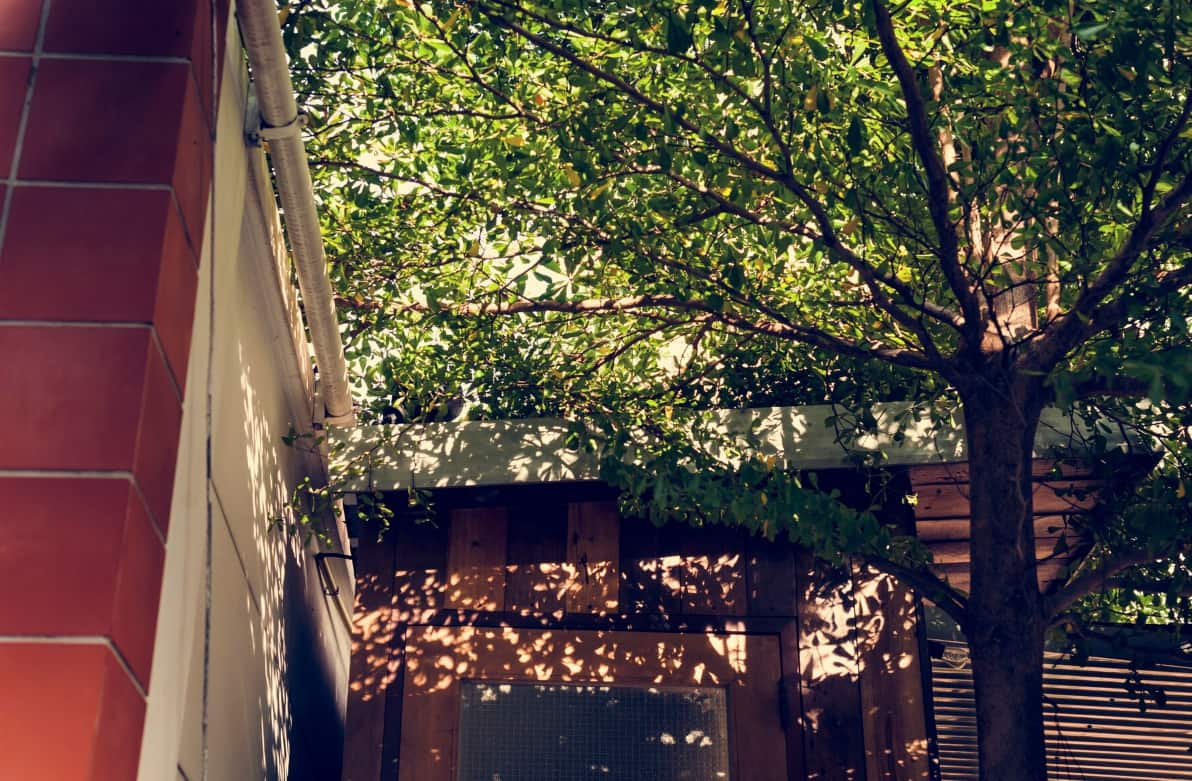Hey there, fellow sun-dodgers! Are you tired of feeling like a roasted chicken every time you step outside? Well, I’ve got some cool news for you.
Planting fast-growing shade trees can be a game-changer for your outdoor space. Not only do they look great, but they also provide a natural air conditioner for your yard.
Now, I know what you’re thinking. “Trees take forever to grow!” But here’s the thing – some trees grow super fast.
We’re talking a few feet each year! That means you could be chilling in the shade before you know it.
Best Fastest Growing Shade Trees for Outdoors

In this article, we’re going to look at 16 awesome trees that grow quickly and provide lots of shade.
We’ll talk about how big they get, where they grow best, and what kind of care they need. By the end, you’ll be ready to pick the perfect tree for your yard.
So, grab a cold drink, find a shady spot (if you can), and let’s dive into the world of fast-growing shade trees!
Top 16 Fast-Growing Shade Trees to Help You Keep Your Cool Outdoors
Weeping willows are like the drama queens of the tree world. With their long, droopy branches, they look like they’re always having a bit of a moment. But boy, do they grow fast!
- Growing zones: 6 to 8
- Annual growth: 3 to 4 feet
- Mature size: 30 to 40 feet
- Sun exposure: Full to partial sun
- Soil requirements: Moist soil
These trees love water, so they’re perfect if you’ve got a spot in your yard that’s always a bit damp. They grow super fast when they’re young, sometimes up to four feet in a year!
As they get older, they slow down a bit, but still add about two feet each year until they reach their full height.
Weeping willows are great for creating a cool, shady spot by a pond or in a corner of your yard. Just remember, they need lots of space to spread out.
Don’t plant them too close to your house or you might end up with a tree in your living room!
If you’re looking for a tree that’s more “stand up straight” than “drama queen,” the Thuja Green Giant might be your new best friend.
- Growing zones: 5 to 8
- Annual growth: 3 to 5 feet per year
- Mature size: 30 to 50 feet
- Sun exposure: Full to partial sun
- Soil requirements: Well draining soil
These trees are like the overachievers of the tree world. They grow super fast, adding 3 to 5 feet each year!
They’re evergreen too, which means they keep their leaves all year round.
That’s great news if you want privacy from your nosy neighbors or a barrier against wind.
Sydni D’Amico, a plant expert from Fast Growing Trees, says these trees are great because they’re tough. They don’t get sick easily and bugs don’t like to bother them.
Plus, their fluffy, green leaves look nice next to other plants in your yard.
The hackberry tree is like that friend who’s always ready for an adventure. It can handle all sorts of tough conditions and still keep growing.
- Growing zones: 3 to 9
- Annual growth: More than a foot per year
- Mature size: More than 60 feet
- Sun exposure: Full to partial sun
- Soil requirements: Well-drained, rich soil
This tree is a real trooper. It can grow in lots of different places across the U.S., and it doesn’t matter if things get a bit dry sometimes.
It grows pretty fast too, adding more than a foot each year.
In the fall, the hackberry puts on a nice show with yellow leaves. But the real treat is its fruit.
Some people call these little berries “Nature’s M&Ms” because they’re small and sweet.
They’ve got a crispy outside and a date-like flavor. Just don’t expect to fill a bowl with them – they’re pretty tiny!
If you’re the kind of person who wants shade yesterday, the tulip poplar might be your perfect match.
- Growing zones: 4 to 9
- Annual growth: Up to 6 feet
- Mature size: 70 feet tall
- Sun exposure: Full sun
- Soil requirements: Well drained soil
This tree is like the Usain Bolt of the tree world. It can grow up to six feet in a single year! That’s taller than most people. Before you know it, you’ll have a big, beautiful tree providing lots of shade.
But the tulip poplar isn’t just about speed. It’s got looks too. In the fall, its leaves turn a gorgeous golden yellow.
And when it’s mature, it produces cool flowers. D’Amico says they look like little yellow tulips with orange paintbrush strokes at the bottom.
This tree is also pretty chill about where it lives. It can handle wet spots, so if you’ve got an area that gets a lot of rain, the tulip poplar will be happy there.
If you want a tree that’s both fast-growing and a bit of a show-off, the crepe myrtle might be your perfect match.
- Growing zones: 6 to 9
- Annual growth: More than 2 feet
- Mature size: Up to 30 feet tall
- Sun exposure: Full sun
- Soil requirements: Well-draining, acidic soil
Crepe myrtles are like the party animals of the tree world. They grow pretty fast, adding more than two feet each year.
But what makes them stand out is their flowers. These trees produce big, bold blooms in reds, pinks, and whites that last all summer long. It’s like having fireworks in your yard for months!
One thing to watch out for – some crepe myrtles are more like big bushes than trees.
If you want one for shade, make sure you pick a larger variety like the Natchez crepe myrtle. That way, you’ll get the height you need for a nice, shady spot.
The red maple is like the popular kid in school – everyone seems to love it. And for good reason!
- Growing zones: 3 to 9
- Annual growth: Up to 18 inches
- Mature size: 40 to 70 feet tall
- Sun exposure: Full or partial sun
- Soil requirements: Well-drained, acidic soil
This tree is a fast grower, adding about a foot and a half to its height each year. It’s pretty easy-going too.
It can grow in different types of soil, though it’s happiest with moist, well-drained dirt and lots of sun.
But the real star of the show is the red maple’s fall color. When autumn rolls around, this tree puts on a spectacular show with bright crimson leaves.
It’s like your fireworks display right in your backyard!
If you want a tree that’s a little different and a lot more dramatic, check out the Summer Chocolate Mimosa Tree.
- Growing zones: 7 to 9
- Annual growth: Up to 3 feet
- Mature size: 20 feet tall
- Sun exposure: Full sun
- Soil requirements: Dry, well-drained soil
This tree is like that friend who always stands out in a crowd. It grows pretty fast, adding up to three feet each year. But what makes it special is its looks.
As the weather warms up, the leaves change from green to a deep, rich burgundy color.
It’s like the tree is putting on a fancy chocolate-colored coat for summer. Then, in late spring, it gets even fancier with fluffy pink blooms.
The best part? This tree is super easy to care for. D’Amico says it’s great for both new and experienced gardeners.
It can handle dry conditions and poor soil like a champ. Plus, it attracts hummingbirds, so you might get some fun visitors in your yard!
If you’ve got plenty of space and want a tree that’ll make a statement, the American Sycamore might be your perfect match.
- Growing zones: 4 to 9
- Annual growth: 2 to 6 feet
- Mature size: 75 to 100 feet tall
- Sun exposure: Full to partial sun
- Soil requirements: Moist, rich soil
This tree is like the basketball player of the tree world – it grows tall and it grows fast!
It can add anywhere from 2 to 6 feet to its height each year. Before you know it, you’ll have a massive tree towering over your yard.
The American Sycamore isn’t just tall, it’s wide too. It can spread out up to 50 feet, giving you tons of shade.
Just make sure you’ve got the space for it. This isn’t the tree to plant in a small backyard or too close to your house!
One cool thing about Sycamores is their bark.
As the tree grows, the bark peels off in patches, creating a cool, mottled pattern of gray, tan, and white. It’s like the tree is wearing camouflage!
If you’re impatient for shade and want a tree that grows crazy fast, the Royal Empress Tree might be your new best friend.
- Growing zones: 5 to 11
- Annual growth: Up to 15 feet per year
- Mature size: 40 to 50 feet tall
- Sun exposure: Full to partial sun
- Soil requirements: Well-drained soil
This tree is like the Usain Bolt of the tree world – it’s seriously speedy! It can grow up to 15 feet in a single year. That’s taller than a one-story house! In less than 10 years, it can reach its full height of 40 to 50 feet.
But the Royal Empress isn’t just about speed. It’s got looks too.
D’Amico says it produces “breathtaking, otherworldly, light purple and pink bell-shaped blooms” in late spring. It’s like having a giant bouquet right in your yard!
If you live somewhere that gets cold or dry, look for the NordMax21® Royal Empress variety. It’s tougher than other types and can handle more extreme weather.
If you’re looking for a tree that’s a bit off the beaten path and can handle dry conditions, the Chinese Pistache might be just the ticket.
- Growing zones: 6 to 9
- Annual growth: Up to 2 feet
- Mature size: 25 to 30 feet tall
- Sun exposure: Full sun
- Soil requirements: Well-drained soil
This tree is like that cool, unique friend who always has interesting stories. It grows pretty fast, adding up to two feet each year. But what makes it stand out is its fall color. When autumn rolls around, the leaves turn into a beautiful mix of reds, oranges, and yellows.
In the spring, male trees (yep, trees can be boys or girls!) produce red, orange, and yellow blooms. It’s like the tree is celebrating the end of winter!
One thing to watch out for – in some parts of the South, this tree is considered invasive. That means it can spread too much and cause problems for local plants. If you’re in the South, check with your local garden expert before planting. Or, choose a male tree. They don’t produce fruit, so they can’t spread seeds around.
If you’ve got a spot in your yard that’s always a bit boggy, the River Birch Tree might be your perfect match.
- Growing zones: 4 to 9
- Annual growth: 3 feet per year
- Mature size: 40 to 70 feet tall
- Sun exposure: Full sun
- Soil requirements: Moist, acidic soil
This tree is like that friend who always wants to hang out by the pool. It loves water! It grows pretty fast too, adding about three feet to its height each year.
One of the coolest things about the River Birch is its bark. It peels off in thin layers, revealing a pinkish inner bark underneath. It’s like the tree is constantly getting a makeover!
In the spring, River Birch trees produce something called “catkins.” These are tight clusters of small flowers that hang down from the branches. They’re not big and showy like some tree flowers, but they add a nice touch of interest to the tree.
Just remember, this tree needs lots of water to be happy. Plant it in the wettest part of your yard, where other trees might struggle.
The American Elm is like the comeback kid of the tree world. It used to be super common, but then a disease wiped out a lot of them. Now, new types of American Elms are making a comeback!
- Growing zones: 4 to 9
- Annual growth: 2 feet
- Mature size: 30 to 70 feet tall
- Sun exposure: Full sun
- Soil requirements: Well-drained soil
This classic American tree grows pretty fast, adding about two feet to its height each year. It can get tall too – up to 70 feet!
One of the best things about American Elms is their shape. They grow into a nice vase shape, with branches that spread out to create a big canopy of shade. It’s like having a giant, natural umbrella in your yard!
In the fall, American Elms put on a nice show with golden yellow leaves. It’s like the tree is trying to soak up the last bit of sunshine before winter.
If you want to plant an American Elm, look for newer varieties like ‘Valley Forge’, ‘Princeton’, ‘American Liberty’, or ‘New Harmony’. These types are tougher and can fight off the disease that hurt so many elms in the past.
If you want a tree that grows fast and puts on a spectacular show, the Corinthian Pink Double Flowering Peach Tree might be your perfect match.
- Growing zones: 5 to 9
- Annual growth: Up to 4 feet
- Mature size: 20 to 25 feet tall
- Sun exposure: Full sun
- Soil requirements: Well-drained soil
This tree is like the ballerina of the tree world. It’s tall and slender, which makes it great for tight spots where you still want some shade. And boy, does it put on a show!
D’Amico says this tree produces “magnificent baby pink spring blooms with magenta centers.” It’s like having a bunch of pink fireworks go off in your yard every spring!
But the show doesn’t stop there. After the flowers are gone, the leaves keep things interesting. They start burgundy in the spring, turn green in the summer, and then go yellow in the fall. It’s like the tree is constantly changing its outfit!
One thing to note – even though it’s called a peach tree, it doesn’t produce fruit you can eat. This tree is all about looks, not snacks!
If you’ve ever seen those spiky brown balls under a tree and wondered what they were, you’ve probably met an American Sweetgum!
- Growing zones: 5 to 9
- Annual growth: Up to 3 feet
- Mature size: 80 feet tall
- Sun exposure: Full
- Soil requirements: Well-drained soil
This tree is a fast grower, adding up to three feet to its height each year. It can get tall too – up to 80 feet!
But the real star of the show is the American Sweetgum’s fall color. When autumn rolls around, the leaves turn into a mix of red, orange, yellow, and purple. It’s like having your own personal fireworks display right in your yard!
Those spiky brown balls are the tree’s seed pods. Some people call them “gumballs.” They can be a bit of a pain to clean up, but they’re great for craft projects. Plus, they’re fun to roll down a hill!
If you live somewhere cold and want a tree that looks great all year round, the Paper Birch might be your perfect match.
- Growing zones: 2 to 7
- Annual growth: Up to 2 feet
- Mature size: 50 to 70 feet
- Sun exposure: Partial sun
- Soil requirements: Well-drained, moist soil
This tree is like the fashion model of the tree world. It’s got stunning white bark that stands out, especially in winter when there are no leaves on the trees. It grows pretty fast too, adding up to two feet to its height each year.
In the fall, Paper Birch trees put on a nice show with bright yellow leaves. It’s like the tree is trying to bring a bit of sunshine to those shorter autumn days.
Cool Fact: Native Americans used to use Paper Birch trees to make canoes. The bark peels off in big sheets, which makes it perfect for covering canoe frames. That’s also why some people call it the Canoe Birch.
Just remember, Paper Birch trees like it cool. They grow best in the northern parts of the country where summers aren’t too hot.
Last but not least, we have the Ginkgo Biloba tree. This tree is like the living fossil of the plant world!
- Growing zones: 4 to 9
- Annual growth: 1 to 2 feet
- Mature size: 50 to 80 feet tall
- Sun exposure: Full to partial sun
- Soil requirements: Well-drained soil
Ginkgo trees grow pretty fast, adding 1 to 2 feet to their height each year. But what makes them special is their history. These trees have been around since the time of the dinosaurs!
One of the coolest things about Ginkgo trees is their leaves. They’re shaped like little fans, which is why some people call it the Maidenhair tree. In the fall, these leaves turn a bright, cheery yellow. It’s like the tree is trying to hold onto a bit of summer sunshine.
Ginkgo trees are tough cookies too. They can handle city pollution, salty air near the coast, and all sorts of tough conditions. That’s probably why they’ve been around for millions of years!
One thing to watch out for – female Ginkgo trees produce seeds that can be pretty stinky when they fall and get squished. Most nurseries only sell male trees to avoid this problem. But if you’re buying a Ginkgo, it’s worth double-checking to make sure you’re getting a male tree.
FAQs:
- Q: How soon will I get shade from these fast-growing trees?
A: It depends on the tree and how big it is when you plant it. But most of these trees can provide decent shade within 3-5 years.
- Q: Do fast-growing trees have shorter lifespans?
A: Some fast-growing trees don’t live as long as slower-growing ones. But many, like the American Elm or Ginkgo, can live for decades or even centuries with proper care.
- Q: Can I plant these trees close to my house?
A: It’s best to plant large trees at least 20 feet from your house to avoid root damage to your foundation. Smaller trees can be planted closer, but always check the mature size before deciding where to plant.
- Q: How often do I need to water these trees?
A: New trees need regular watering for the first year or two. After that, it depends on the type of tree and your climate. Trees like the River Birch need lots of water, while others like the Chinese Pistache can handle dry conditions.
- Q: Will these trees attract pests?
A: All trees can potentially attract some insects, but most of these trees are relatively pest-resistant. The Thuja Green Giant, for example, is known for being particularly resistant to pests and diseases.
- Q: Can I plant these trees in containers?
A: Most of these trees get too large for containers. However, some smaller varieties of Crepe Myrtle or Japanese Maple can work in large containers.
- Q: How do I care for my tree in the winter?
A: Most of these trees can handle winter well in their recommended growing zones. Young trees might need protection from harsh winds or heavy snow. Always check the specific care needs for your chosen tree.
- Q: Can I prune these trees to control their size?
A: Yes, most trees can be pruned to control their size and shape. However, it’s best to choose a tree that naturally fits your space rather than relying on heavy pruning.
- Q: Do any of these trees produce fruit?
A: The Hackberry produces small, edible berries. Most of the others don’t produce edible fruit, though some like the Sweetgum produce seed pods.
- Q: How deep do I need to plant these trees?
A: Generally, you should dig a hole about twice as wide as the root ball and just as deep. The top of the root ball should be level with or slightly above the ground. Always check specific planting instructions for your chosen tree.
Also Check:
Conclusion:
Wow, that’s a lot of trees! Who knew there were so many fast-growing options for shade? Let’s recap some of the key points:
- Fast doesn’t mean forever: Even the fastest-growing trees will eventually slow down. But they can give you a good head start on shade.
- Size matters: Make sure you choose a tree that will fit in your space when it’s fully grown. That 100-foot American Sycamore might look cute now, but it won’t be so cute when it’s taking over your whole yard!
- Location, location, location: Some trees, like the River Birch, love wet soil. Others, like the Chinese Pistache, can handle dry conditions. Pick a tree that will be happy in your yard’s conditions.
- Think about the seasons: Many of these trees offer more than just summer shade. From spring flowers to fall colors, think about what you want your tree to do all year round.
- Maintenance matters: Some trees, like the Ginkgo, are pretty low-maintenance. Others might need more care. Think about how much time you want to spend taking care of your tree.
Remember, planting a tree is an investment in your future. It might take a few years to get big enough for serious shade, but once it does, you’ll have a cool, comfy spot to relax for years to come.
So, what are you waiting for? Grab a shovel, pick your favorite fast-growing shade tree, and start planting!
Before you know it, you’ll be sipping lemonade in the shade of your very own tree. Happy planting!



